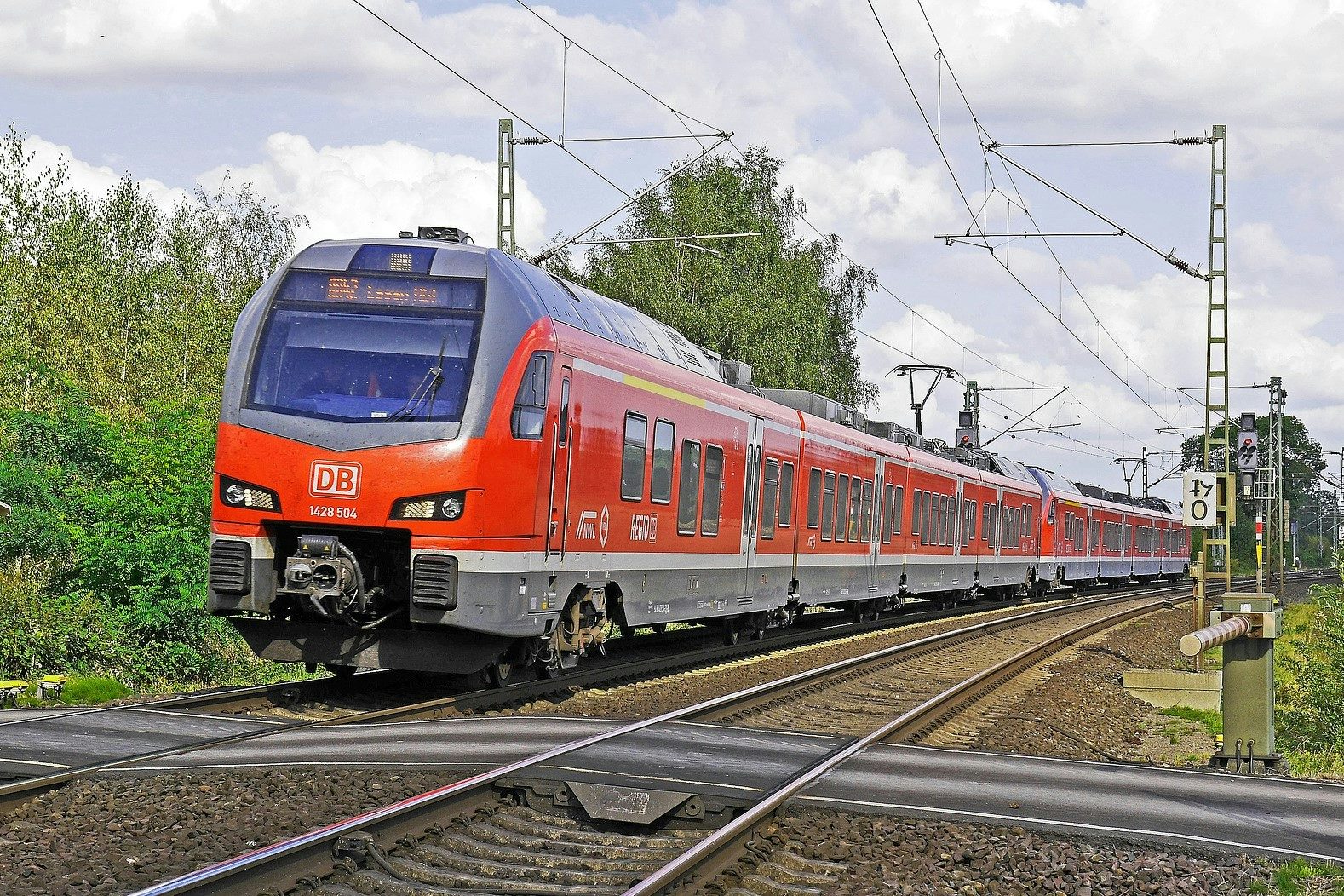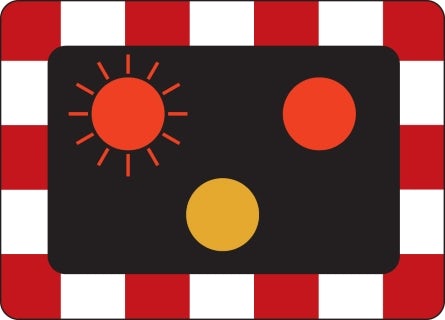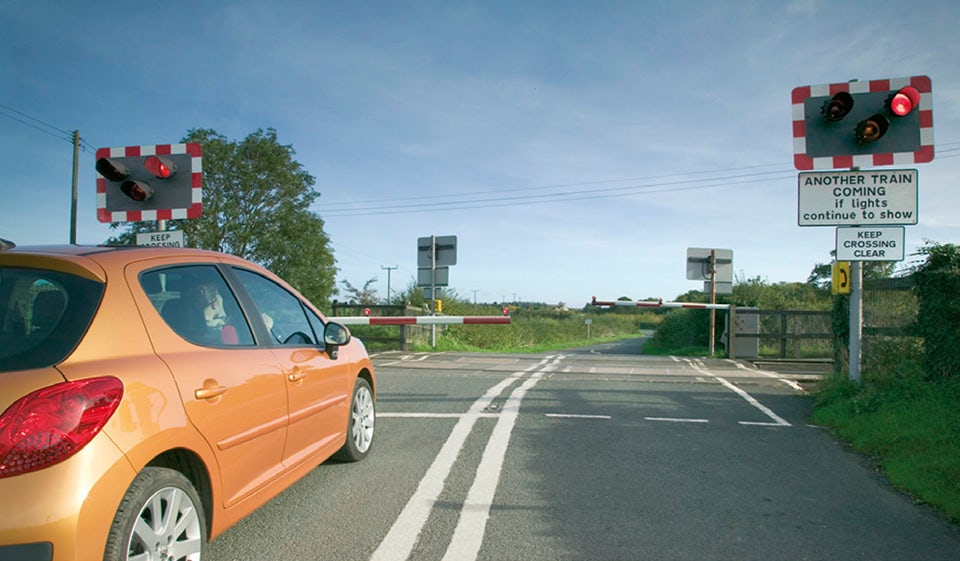
A level crossing is where a road crosses a railway or tramway line. Approach and cross it with care. Never drive onto a crossing until the road is clear on the other side and do not get too close to the car in front. Never stop or park on, or near, a crossing.
A collision with a train or tramway line is likely to have a fatal outcome. You should always slow down to a speed at which you, if necessary, can stop when nearing a level crossing. Trains have long stopping distances and are unable to stop in time for a car on the crossing.

Warning signs are usually placed well in advance. Listen and look both ways before crossing the railway - even if there aren’t any indications of an approaching train.
Controlled crossings
Most crossings have traffic light signals with a steady amber light, twin flashing red stop lights and an audible alarm for pedestrians. They may have full, half or no barriers.
- You MUST always obey the flashing red stop lights.
- You MUST stop behind the white line across the road.
- Keep going if you have already crossed the white line when the amber light comes on.
- Do not reverse onto or over a controlled crossing.
- You MUST wait if a train goes by and the red lights continue to flash. This means another train will be passing soon.
- Only cross when the lights go off and barriers open.
- Never zig-zag around half-barriers, they lower automatically because a train is approaching.
- At crossings where there are no barriers, a train is approaching when the lights show.
- Do not enter a level crossing if the road beyond the crossing is blocked (e.g. by slow-moving or stopped vehicles). Always make sure that you do not get stuck on the railway!

Open crossings
Open crossings don’t have gates, booms or flashing lights. Situations when you should be extremely careful include:
- when approaching a crossing without any signals as a train can come at any time without warning
- if the view of the train tracks is limited (e.g. blocked by building or vegetation)
Slow down, listen for trains and look in both directions before passing. If there is a railway telephone, use it to contact the signal operator to make sure it is safe to cross.
Check for other trains
Never drive onto a level crossing while a train is approaching, never move until all warning lights have stopped flashing, and never cross before the gates are fully open,
If you have stopped to let a train pass, don’t move until the lights have stopped flashing! The lights may keep flashing to indicate a second train is approaching.
Incident and breakdowns
If your vehicle breaks down, or if you have an incident on a crossing you should
- get everyone out of the vehicle and clear of the crossing immediately
- use a railway telephone if available to tell the signal operator. Follow the instructions you are given
- move the vehicle clear of the crossing if there is time before a train arrives. If the alarm sounds, or the amber light comes on, leave the vehicle and get clear of the crossing immediately.
